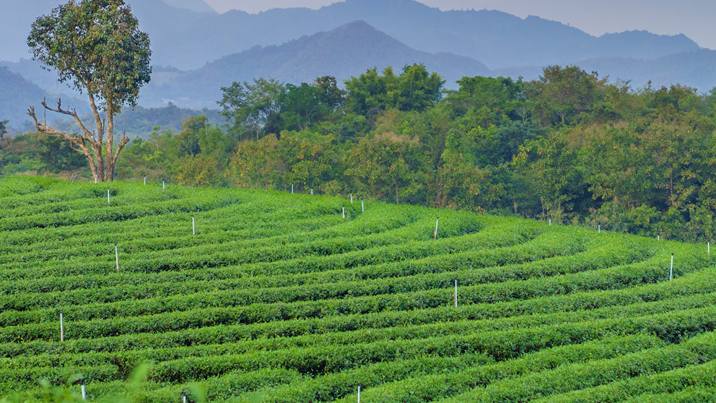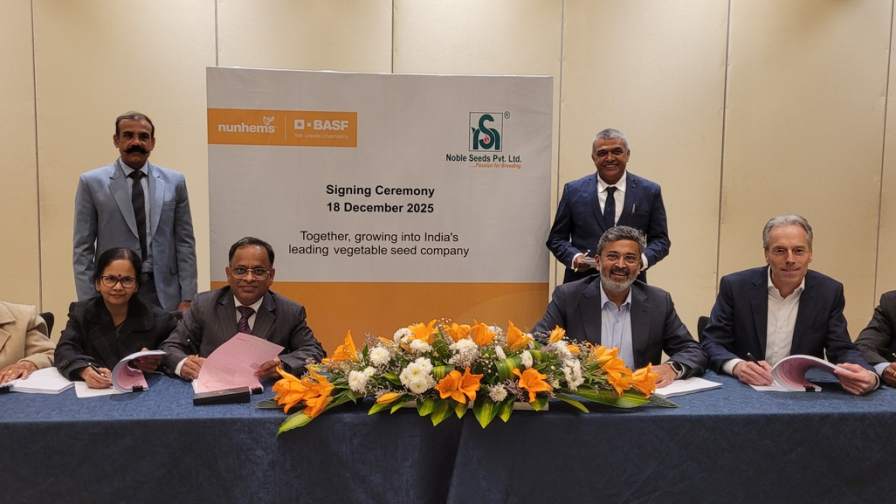How Big Can China Get?
China is riding a wave of prosperity. From manufacturing to engineering and architecture, the country is bursting with growth and seemingly expanding in every direction. The country’s GDP growth outpaces nearly every country, and its rising middle class is supporting expenditures on everything from automobiles to energy drinks.
China’s crop protection manufacturers, importers and exporters are following the same upward trend. Sales volumes are at all-time highs, and revenues are on par with 2008 revenues, which were artificially high due to the high price of herbicides, most notably glyphosate.
In talking with formulators, manufacturers and exporters here, it is clear that a bubbling optimism continues to monopolize attitudes and operations. China is the fourth-largest crop protection market in the world behind the EU, US and Brazil, and it is growing domestically.
In 2009, less than a quarter of Chinese-made pesticides hit the export market. So, despite the wide variety of active substances being originated in China, three-quarters of all pesticides end up in the domestic market, and many of these products are finished formulations, whereas exported products tend to be technical grade products.
Higher use of crop protection products domestically has helped fuel six consecutive years of bumper harvests in China. The central government’s drive to produce more food, feed and fiber for the country is driving more demand for finished formulations and subsequently creating more competition in the domestic formulation market.
In conjunction with well-documented capacity expansions among China’s manufacturers, its imports of pesticides have grown every year for the past decade. This rising trend of domestic pesticide use has changed the industry’s perception of China: from originator of molecules to target market.
“It is important that we have a presence in the local market; it is important to be in touch with the markets you serve,” says James Bristow, CEO of Rotam Global AgroSciences, which is based in Hong Kong and maintains R&D and manufacturing operations in mainland China.
Rotam’s International group plans to exceed $200 million in sales this year, and much of it is due to expanding operations in China. The company produces 35 core molecules and has another 15 in some stage of development, including carbonate formulations for the Chinese market.
“The whole concept is maximizing the blockbusters once the expiry has arrived,” Bristow says. “And we believe there are huge profits in premium formulations of post-patent technologies.”
The company is not alone. It seems that every company that has been expanding during the past decade is focusing on better formulation technology to differentiate itself in the markets where it wants to expand. This type of strategic growth requires not just better formulations, but sound market strategies as well.
Shanghai Forever, a trading company launched in 2003, is also balancing growth with a blend of domestic sales of formulated produces, which contributes about half of its revenues.
“Environmental standards for the origination factories are very expensive to keep in compliance,” says Robert Huang, deputy general manager of Shanghai Forever. “Formulations are easier to get approved because the environmental oversight is not as rigorous, and profits are better with formulations because the equipment and facilities are less expensive.”
Shanghai Forever is an export company that subcontracts its formulation work to other plants, effectively setting up toll manufacturing, primarily for second-tier markets where competition is less rigorous. The strategy helped the company expand to $60 million in 2010 revenues, and it continues to focus on medium-sized markets, especially in Latin America. Chile, Peru, Bolivia and Paraguay all represent opportunities where barriers to entry are lower than markets like the US, EU and Brazil, and competition is lower as well. Chile and Paraguay are estimated to be about $300 million markets, according to data from ALINA. Bolivia and Peru are about $200 million markets. Opportunities also exist in Colombia ($422 million), Ecuador ($230 million) and Venezuela ($207 million).
AgroDragon is also focusing on its finished formulation for export markets.
“We are focusing on selling our own brands,” says Sharon Sun, vice general manager for AgroDragon, adding that the company has had 100% growth since it began operating in 1999 through 2007. The company earned $25 million in 2010 and expects a 10% jump this year. “The multinationals are improving their products all the time, so it is important that we do as well.”
Many times, better formulations lead to better partnerships. At Qiaoji Group, a Shanghai company known for its quality formulations, the reputation of the company has landed toll manufacturing deals with multinationals that represent the lion’s share of the company’s business.
“We are different because we focus on perfect quality,” says Stephen Cao, president and general manager of Qiaoji. “This is why the multinationals can distribute our finished goods in other countries. They are fully manufactured and packaged by us and distributed by the multinationals.
“We have some technical-grade products, but most of our experts spend their time on formulation technology like bigger companies do,” Cao says. Quaoji now owns two modern formulation factories in Jiangsu province with about 200 employees across the company.
Labor Crunch
In recent years, something has been happening in China’s manufacturing industries that few foresaw. Labor costs are increasing dramatically, especially in South China, a traditional manufacturing hub. In Shenzhen, wages for factory workers anecdotally are said to have doubled in the past couple years, and similar increases are true for the rest of the East Coast.
A recent survey by China’s Standard Charter Bank of 87 companies shows 2011 wages are expected to rise up to 15% in addition to the 10% increase in 2010. Some analysts predict 30% increases in salaries. China Labor Watch, an organization that investigates worker conditions in China’s export sector, estimates wages for migrant workers in manufacturing will rise 15%.
Much of the wage increases are region specific and contingent on worker availability. It is estimated that almost 30% of factory workers in southern China didn’t return to their jobs after the Lunar New Year holiday in February. Many economists and sociologist surmise that many migrant workers returned to their homes in inland provinces to farm, a venture they vacated to reap higher salaries in factories. Additionally, some say that 40 years of China’s one-child policy means that the Chinese economy has been creating jobs faster than the society can create workers. Exchange rates play a part as well.
Whatever the case, a new paradigm is emerging. Economic growth is outpacing the available workforce, creating a demand for higher wages that is impacting the profitability of the manufacturing community, including pesticide makers.
“If the current situation persists for the next 10 years, then it will put the Chinese pesticide industry down,” Cao says. “The market accepts a new brand step-by-step, and the perception of Chinese brands does not yet allow prices to rise to cover the costs of materials and labor.”
However, rising salaries might not be a bad thing for the Chinese manufacturing industry as it attempts to revalue its goods in the export economy.
“In the next five years, we need to bolster use of fungicides, seed treatments and low-use ecologically friendly chemicals for the betterment of all of China and the crop protection industry,” says Sun Shubao, secretary general of the China Crop Protection Industry Association. “Domestically, we think the rise in labor prices is a good thing. In the past, China has given the impression that our labor is too cheap for manufactured goods, and now the labor costs will affect the foreign exchange values of products.”
These market factors are forcing Chinese companies to get serious about their markets and their products, which is exactly what the government wants to facilitate in this sector.
“We need to stop approving permits for new manufacturing sites for active substances that already have too much supply, including glyphosate, paraquat and imidacloprid,” Sun says. “This must happen because the oversupply is threatening the success of larger and stronger companies, which ultimately have a more dedicated social responsibility to China and the industries they serve. Food safety issues, for example, mostly arise from smaller companies without a mindset of social responsibility.”






